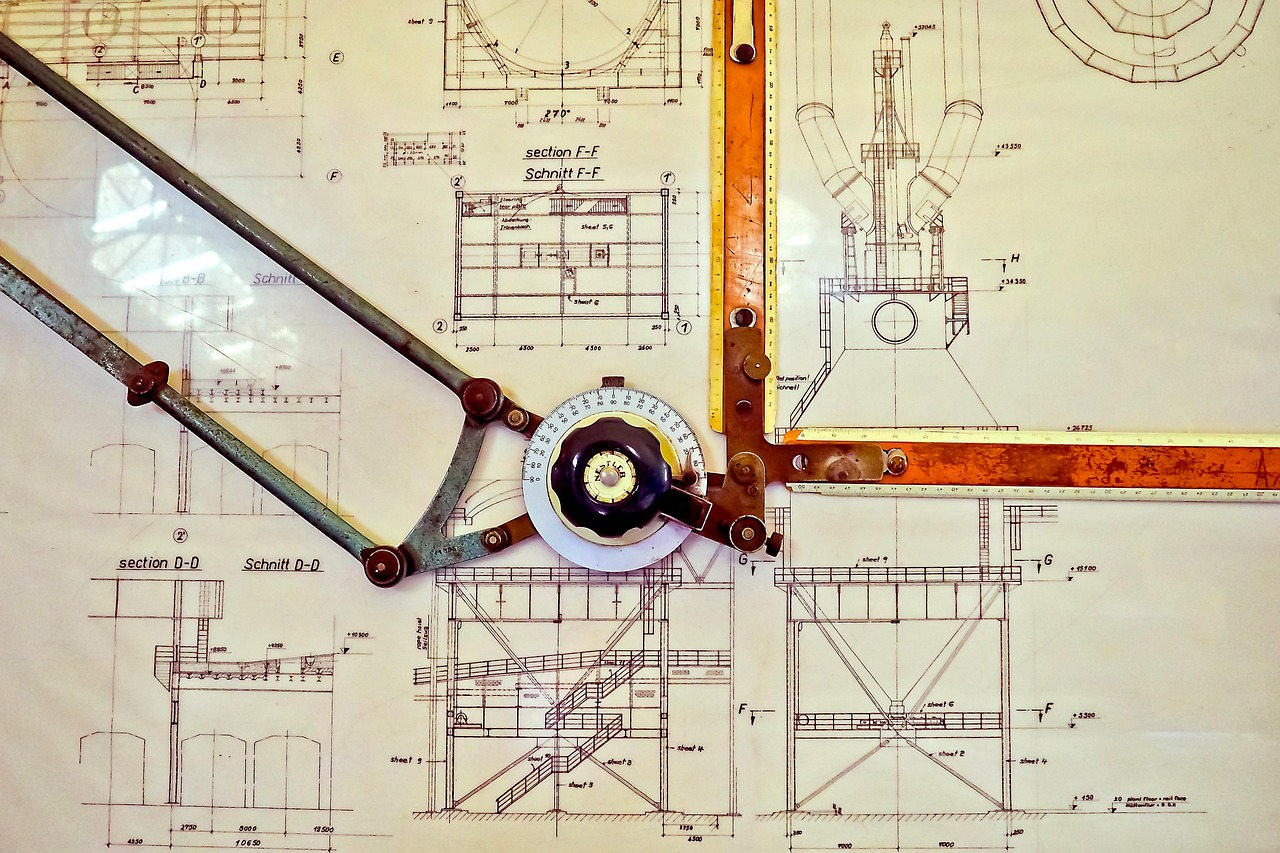The Role of a Draughtsperson in the Construction Industry
A Comprehensive Guide
The construction industry is a complex field that involves careful planning and execution at every stage of a project. One of the most important roles in this field is that of the draughtsperson. Draughts people, also known as drafters or CAD technicians, are integral in turning conceptual designs into detailed technical drawings and plans that guide construction teams. Their expertise ensures that projects are built to specification, on time, and within budget.
This article explores the role of a draughtsperson in the construction industry, detailing their responsibilities, required skills, tools, and their overall contribution to construction projects.
What is a Draughtsperson?
A draughtsperson is a skilled professional responsible for creating technical drawings and plans that represent architectural and engineering designs. These drawings serve as the blueprint for construction teams and contractors, providing precise details on how a building or infrastructure project should be built. Draughtspersons work in various industries, but their work in the construction sector is particularly crucial due to the complexity and size of construction projects.
They are responsible for producing detailed plans for everything from residential homes to large commercial buildings and civil infrastructure. In the modern construction industry, draughtspersons are usually trained in Computer-Aided Design (CAD) software, which allows them to create, modify, and share digital drawings efficiently.
The Key Responsibilities of a Draughtsperson in the Construction Industry
The specific duties of a draughtsperson can vary depending on the nature of the project and the team they are working with. However, here are some of their main responsibilities:
- Creating Technical Drawings
A draughtsperson’s primary responsibility is to produce accurate and detailed technical drawings. These can include floor plans, elevations, sections, and detailed construction diagrams. These drawings provide information on dimensions, materials, structural elements, and more, serving as the instructions for contractors and construction workers.
- Collaboration with Architects and Engineers
Draughtspersons work closely with architects, engineers, and project managers to ensure the designs are accurately represented. They interpret the concepts and specifications provided by architects and engineers, translating them into actionable drawings. Communication is crucial, as it allows the draughtsperson to clarify any ambiguities in the design and ensure that the drawings are aligned with the project’s objectives.
- Revising and Updating Drawings
Construction projects often undergo revisions due to changes in design, budget constraints, or site conditions. Draughtspersons are responsible for updating their technical drawings to reflect these changes. They ensure that all revisions are documented and that the construction team has access to the most current version of the plans.
- Ensuring Compliance with Building Codes and Regulations
A critical aspect of a draughtsperson’s role is ensuring that the technical drawings comply with local building codes, zoning laws, and safety regulations. They need to have a strong understanding of these codes to ensure that the designs they create are legal and safe. This responsibility may also involve liaising with regulatory authorities to obtain the necessary permits for construction.
- Using CAD Software
Most draughts people today use Computer-Aided Design (CAD) software to create their technical drawings. This software allows them to produce highly accurate, scalable drawings and make quick revisions. Popular CAD software includes AutoCAD, Revit, and SolidWorks, which all provide tools for creating 2D and 3D models. The use of CAD software makes it easier to visualise complex designs, detect issues early in the design phase, and streamline communication with other project stakeholders.
Essential Skills for a Draughtsperson in the Construction Industry
To succeed as a draughtsperson, a combination of technical, analytical, and creative skills is essential. Some of the most important skills include:
- Proficiency in CAD Software
Being highly skilled in CAD software is a fundamental requirement. Draughtspersons need to be able to create detailed 2D and 3D models and work with various design tools to ensure accuracy and efficiency. The ability to use different CAD tools and learn new ones is a critical skill that enables them to meet the varying demands of construction projects.
- Attention to Detail
Construction projects often involve complex designs, and even a small mistake in a technical drawing can have significant consequences. Draughtspersons need to have an eye for detail, ensuring that all elements in the design are represented accurately. This includes checking measurements, materials, and construction details to make sure everything aligns with the project’s specifications.
- Knowledge of Building Codes
Understanding building codes, safety regulations, and industry standards is essential for a draughtsperson. They must ensure that their drawings comply with these codes to avoid costly mistakes, delays, or safety hazards. Draughtspersons may also need to work with local authorities to obtain permits or approvals for certain aspects of the design.
- Strong Communication and Teamwork Skills
Draughtspersons often work as part of a multidisciplinary team, collaborating with architects, engineers, and construction managers. Effective communication is essential to ensure that everyone is on the same page and that any issues or changes in the design are addressed promptly. Draughtspersons must also be able to explain their drawings to others, including those who may not have a technical background.
- Problem-Solving Ability
During the design and construction phases, challenges can arise that require quick thinking and problem-solving. Draughtspersons need to identify potential issues in the design and propose solutions. Their ability to think critically and adapt to changes in the project is crucial for its success.
Tools and Software Used by Draughtspersons
The tools and software used by draughtspersons have evolved over the years, with digital technologies playing a significant role in enhancing productivity and accuracy. Some of the most commonly used tools include:
- AutoCAD
AutoCAD is one of the most widely used CAD programs in the construction industry. It allows draughtspersons to create 2D and 3D drawings with great precision. AutoCAD offers a wide range of tools that help draughts people generate floor plans, elevations, and sections while ensuring the design adheres to specific measurements and tolerances.
- Revit
Revit is a Building Information Modelling (BIM) tool that is widely used in the construction industry, especially for larger-scale projects. Unlike traditional CAD software, Revit allows for 3D modelling, which provides a more holistic view of the design. Revit is particularly beneficial for projects that involve complex systems such as structural, electrical, and plumbing designs.
- SketchUp
SketchUp is a user-friendly 3D modelling software that is often used in the initial design stages to create visual models. Draughtspersons can use SketchUp to develop early-stage visualisations of a building or structure before moving on to more detailed technical drawings with other software.
- MicroStation
MicroStation is another CAD software that allows draughtspersons to create detailed technical drawings. It is especially popular for large infrastructure projects, such as roads, bridges, and utilities. It offers both 2D drafting and 3D modelling capabilities.
How Draughtspersons Contribute to Successful Construction Projects
Draughtspersons are vital to the smooth execution of construction projects. Here’s how they contribute to the overall success of a project:
- Minimising Errors and Reducing Costs
By creating precise technical drawings, draughtspersons help minimise the risk of errors on-site. This reduces the likelihood of costly mistakes and delays during construction, ultimately helping to keep the project within budget.
- Streamlining Communication
Draughtspersons create clear, visual representations of the project that help all team members—architects, engineers, contractors—understand the design and construction process. These drawings serve as a universal reference that guides the entire project.
- Ensuring Compliance and Safety
With their knowledge of building codes and regulations, draughtspersons ensure that designs comply with safety standards and local laws. Their role in ensuring compliance helps to avoid legal issues and potential safety hazards during construction.
Conclusion
In the construction industry, draughtspersons play a critical role in turning ideas into reality. Through their technical expertise, attention to detail, and proficiency in CAD software, they produce accurate and actionable drawings that guide construction teams. Their work helps ensure that projects are completed on time, within budget, and in compliance with all relevant regulations. Whether working on residential, commercial, or infrastructure projects, draughtspersons are indispensable to the construction process, ensuring that buildings are constructed safely, efficiently, and to the highest standards.
Your Questions Answered
Discover how a construction cost estimator plays a crucial role in the success of your project by ensuring efficiency and safety on site.
What does a draughtsperson do in the construction industry?
A draughtsperson in the construction industry creates detailed technical drawings and plans based on the designs and specifications provided by architects and engineers. These drawings, which can include floor plans, elevations, and sections, serve as instructions for construction workers to follow. Draughtspersons ensure that designs are accurate, meet regulatory standards, and can be feasibly constructed.
What skills are required to become a draughtsperson?
To become a draughtsperson in the construction industry, one needs strong technical skills in CAD (Computer-Aided Design) software such as AutoCAD, Revit, and MicroStation. Attention to detail, problem-solving ability, and knowledge of building codes and construction regulations are also essential. Additionally, good communication and teamwork skills are important, as draughtspersons often collaborate with architects, engineers, and construction teams.
What software do draughtspersons use in construction projects?
Draughtspersons in the construction industry primarily use CAD software to create their drawings. Popular software includes AutoCAD, which is used for 2D and 3D drawing; Revit, a Building Information Modeling (BIM) software for creating 3D models; and MicroStation, which is often used for larger infrastructure projects. Additionally, some draughtspersons may use SketchUp for early-stage 3D visualisations.
How does a draughtsperson ensure compliance with building codes and regulations?
Draughtspersons are responsible for ensuring that their technical drawings comply with local building codes, safety regulations, and zoning laws. They need to be knowledgeable about these standards to avoid any issues during the construction process. Draughtspersons may also collaborate with regulatory authorities to secure the necessary permits or approvals for the construction project.
Is a draughtsperson’s role the same as that of an architect or engineer?
While there is some overlap, a draughtsperson’s role is different from that of an architect or engineer. Architects are responsible for the overall design and aesthetic vision of a project, while engineers focus on the technical and structural aspects. Draughtspersons translate these designs into precise technical drawings that construction teams use. They are skilled in creating detailed and accurate representations of the architectural and engineering plans but do not typically make design decisions themselves.
Ready to Start Your Project?
Current Vacancies
Planning Scheduler
🚛 WE’RE HIRING! – PLANNING SCHEDULER 🗓️✨ Are you an organised multitasker with a passion for logistics and planning? 📦💡 Join our dynamic team and take charge of coordinating and optimising a busy fleet of trucks 🚚💨 — making sure every delivery runs smoothly,...
Mobile Crane Operator
🚧 Join Our Team at B&B Construction Ltd. – Skilled Mobile Crane Operator Wanted 🚧 At B&B Construction Ltd., we don’t just build structures – we build excellence, teamwork, and lasting success. We are now seeking a Skilled Mobile Crane Operator to become...


